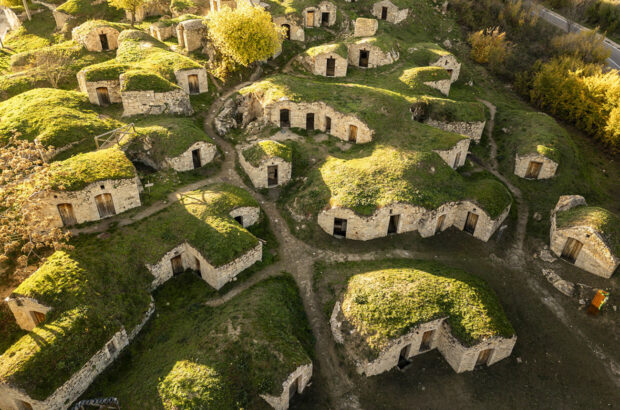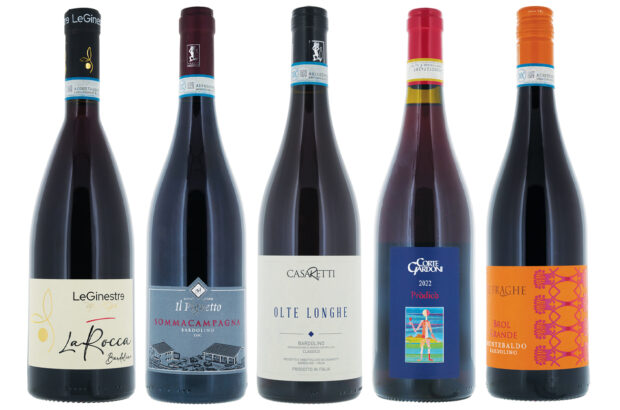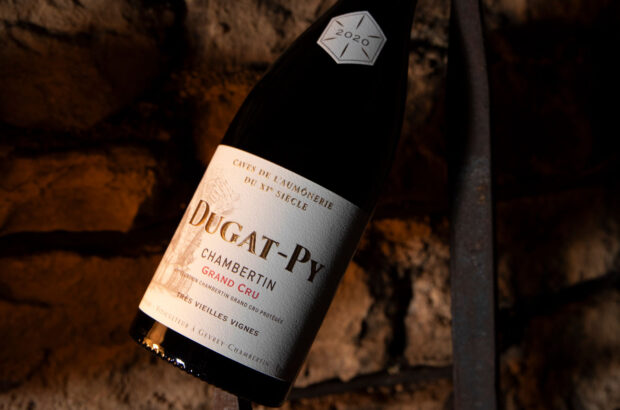Wine matching by Fiona Beckett. Wines selected by our Decanter experts.
Most of us would, I think, agree that you don’t have to give the same thought to wine pairing when out on a picnic as you would for a formal dinner party. But that’s not to say you shouldn’t choose a wine that’s broadly suitable for the style of the dishes involved, especially if they have a distinct personality, such as those of Indonesian food. It’s also true that most picnics include more than one dish and take place outside, and this puts a premium on wines with bigger flavours than you might consider for an indoor occasion.
The other issue, assuming the summer weather gods are smiling, is keeping your wines cool: one good reason wine in cans is becoming such a popular and practical option now. Choice is more limited than with bottled wine, but with new entrants to the market such as Vinca and Vin du Can you don’t have to be short-changed on quality. Small (2.25L) wine boxes from companies including The BIB Wine Co and Laylo are also a good bet, but harder to keep chilled.
That said, for the more interesting and alternative choices, such as those I’ve outlined on the following pages, you’re better with a bottle, so get your cool bag ready and head off.
The following are extracts from recently published books, with the title and author of each referenced at the end of the recipe.
Pork satay with chilli, ginger & lime

Recipe from The Indonesian Table by Petty Pandean-Elliott (£24.95 Phaidon Press)
Sate babi rica-rica
Rica-rica is a sambal [hot paste] from Manado, North Sulawesi. The name translates to ‘chilli’ in the local dialect and, as to be expected, this spicy condiment has fiery intensity. The spiciness is also attributed to the red ginger, distinctively coloured, local to Manado and smaller than your typical ginger. For this recipe, I have reduced the number of bird’s eye chillies, but you can add as many as 20 if you’re feeling adventurous. You can also try this dish using prawns, chicken or fish fillets.
Makes 12-14 skewers
Ingredients
Rica-rica
- 2 cloves garlic, coarsely chopped
- 2 banana shallots, coarsely chopped
- 2-3 red bird’s eye chillies
- 2 large red chillies
- 20g ginger, thinly sliced
- 2 tbsp coconut oil or sunflower oil
- juice of 1 lime
- salt, to taste
Satay
- 600g pork tenderloin, cut into 2cm cubes
- 1⁄2 tsp salt
- juice of 1 lime
- 1 tbsp coconut oil
Method
1. Soak 14 long bamboo skewers in water for an hour. 2. To make the rica-rica, combine all the ingredients, except the oil, lime and salt, in a blender and whizz to a fine paste. Set aside.
3. Heat the oil in a frying pan over medium heat. Add the paste and sauté for 6-7 minutes. Season with lime juice and salt and sauté for another 2 minutes. Set aside.
4. To make the satay, season the pork with salt, half of the rica-rica paste and the lime juice. Mix well and set aside to marinate for 10 minutes.
5. Preheat a charcoal barbecue or a griddled (grill) pan over high heat. Thread 4 pieces of pork onto each skewer. Grill the pork for 5-6 minutes, brushing it with marinade and turning often, until cooked through.
6. Transfer the skewers to a plate. Serve as is or with steamed rice or a spiced vegetable stew and the remaining rica-rica.
Fiona Beckett on what to drink
I normally recommend a Semillon with a satay sauce (peanuts and pineapple go wonderfully well together), but with the number of chillies involved (maybe not up to 20 if you’re drinking wine!) I’d be more inclined to go for the lush tropical fruit flavours of a Marlborough Sauvignon Blanc or any other Sauvignon Blanc made in the Marlborough style. The other good option, of course, would be a Clare or Eden Valley Riesling from South Australia – maybe, given the overall level of chilli heat, with just a touch of sweetness.
Try: Smith & Sheth, Cru, Sauvignon Blanc, Wairau Valley, Marlborough, New Zealand 2021
Sweetcorn fritters with chilli & tomato sambal

Recipe from The Indonesian Table by Petty Pandean-Elliott (£24.95 Phaidon Press)
Perkedel jagung dan dabu-dabu
Served as a snack or as part of a meal, these sweet and crunchy fritters are irresistible. Best of all, they’re unbelievably simple to make. Traditionally, the fritters are made with fresh sweetcorn on the cob, but you can substitute canned (or frozen) sweetcorn so long as you drain out all the water (this ensures a crunchy fritter). Makrut lime leaves infuse the fritters with a wonderful fragrance. Dabu-dabu is a fresh, versatile chilli-tomato sambal similar to tomato salsa. Traditionally, unripe green tomatoes are used, but regular tomatoes are acceptable. The sambal can be made in advance, but to preserve the tomatoes’ freshness, add the lime juice, salt and oil just before serving.
Serves 4
Ingredients
Fritters
- 250g sweetcorn
- 3 makrut lime leaves, centre stem removed and thinly sliced
- 2 cloves garlic, grated
- 2 spring onions (scallions), finely chopped
- 1-2 red bird’s eye chillies, finely chopped
- 500ml sunflower oil, for deep-frying
- 1 banana shallot, finely chopped
- 6 tbsp rice flour
- 4 tbsp cornflour (cornstarch)
- 1⁄2 tsp salt
- 1⁄2 tsp white pepper
Sambal
- 3 green or red tomatoes, chopped
- 2-3 red bird’s eye chillies, thinly sliced
- 1 banana shallot, finely chopped
- 2 tbsp coconut oil or extra-virgin olive oil, warmed
- 1⁄4 tsp salt
- pinch of sugar (optional)
- juice of 2 limes
Method
1. If using canned sweetcorn, drain well and squeeze out as much water as possible from the kernels. Transfer the sweetcorn to a food processor and blend for 10 seconds until a coarse purée.
2. In a large bowl, combine the sweetcorn, lime leaves, garlic, spring onions, chillies and shallot and mix well. Stir in the rice flour and cornflour. Season with salt and pepper. The batter should be thick but easy to mix. If needed, add 2-3 tbsp of cold water to thin it out slightly.
3. Heat the oil in a wok or deep saucepan over medium heat. The oil is ready when a cube of bread dropped in sizzles on contact and turns golden in 10-15 seconds (alternatively, use a thermometer and heat to 180°C/350°F).
4. Scoop a tablespoon of the mixture and flatten it slightly into a patty. Repeat with the remaining mixture. Lower 5-6 into the pan and deep-fry for 2-3 minutes each side until golden brown. Using a slotted spoon, transfer them to a plate lined with paper towels. Repeat with the remaining fritters. 5. Mix all the sambal ingredients in a bowl. Serve immediately or transfer to an airtight container, top with oil and store in the refrigerator for 2-3 days.
Fiona Beckett on what to drink
You could pair these fritters with New Zealand Sauvignon Blanc, too, especially if you were serving them at the same time as the satay sticks (left) or, possibly even better, a sparkling Sauvignon Blanc or Riesling since fizz works so well with anything fried. I’d be tempted by an off-dry sparkling rosé, or at least one with not too low a dosage, most likely from the southern hemisphere, too (I’m thinking South Africa). A fruity still rosé, maybe from Portugal, could also work well.
Try: Graham Beck, Rosé Brut, Robertson, South Africa NV
Pale smoked haddock scotch egg

Credit: Paul Gregory
Recipe extracted from For the Love of the Sea II, compiled by Jenny Jefferies (£22 Meze Publishing)
This is a wonderful recipe using delicious pale smoked haddock to make a scotch egg, as opposed to sausage meat. It’s lovely served with a homemade parsley mayonnaise for dipping.
Serves 4
Ingredients
- 300g pale smoked haddock
- 35g cream cheese
- 2 spring onions (scallions), finely chopped
- 1 tbsp chopped fresh dill
- salt and pepper
- 4 small eggs
- 100g plain flour
- 1 large egg
- 2 tbsp milk
- 150g breadcrumbs
- oil, for frying
- sea salt, to finish
Method
1. Preheat your oven to 180°C/350°F/gas 4 and brush a baking tray with oil. Place the smoked haddock on the tray and cook in the oven for about 10 minutes. Remove and leave to cool.
2. Once cool, flake the smoked haddock and remove any bones and skin. Place the fish in a food processor with the cream cheese, spring onions and dill. Blend until smooth and then season to taste.
3. While the haddock is cooking, boil the 4 small eggs in their shells for 5 minutes, then plunge them straight into iced water to prevent discolouration.
4. Once cool, peel the eggs and pat dry. Take a quarter of the haddock mix and flatten it in the palm of your hand – which ideally should be cold – then place an egg in the middle. Mould the haddock mix into a ball to completely cover the egg, then repeat with the remainder of the mix and eggs.
5. Leave the eggs like this to rest for up to an hour. Meanwhile, place the flour in one bowl, whisk the remaining large egg with the milk in another, and place the breadcrumbs in a third bowl.
6. Coat the rested scotch eggs in the flour, then the egg mix, then the breadcrumbs. Heat a deep fat fryer or a large pan half full of oil to 200°C/400°F and cook the eggs for 3 minutes until golden brown. Drain on kitchen paper to remove excess oil, then serve warm and enjoy with some parsley mayonnaise.
Fiona Beckett on what to drink
I wouldn’t normally suggest a scotch egg with a Chardonnay, but I wouldn’t normally make them with smoked haddock either (though I will now). My first thought is Chablis, but frankly any creamy, cool-climate Chardonnay, say from Limoux, with a subtle touch of oak would work wonderfully. Other good options would be old bush-vine Chenin Blanc, a Grenache Blanc or a Grenache-based white Rhône blend, or maybe even a Pinot Gris, but nothing too overtly fruity I would say.
Try: Tabalí, Talinay Limestone Vineyard Chardonnay, Limarí Valley, Chile 2021
Freekah & herb salad with preserved lemon & black olives

Credit: Mowie Kay
Recipe extracted from Rice & Grains by Kathy Kordalis (£18.99 Ryland Peters & Small)
Roasted shallots with a touch of cinnamon serve as a bed for the freekah, crisp cucumber, tomatoes, olives and the intensely citrus yet mellow preserved lemon. For an extra element, crumble over some feta or add pan-fried halloumi.
Serves 4
Ingredients
- 8 shallots, peeled and halved
- 2 tbsp olive oil
- a pinch of ground cinnamon
- a pinch of dried oregano
- 200g freekah, rinsed
- 50g almonds, coarsely chopped and toasted
- 1 large cucumber, cubed
- 200g cherry tomatoes, quartered
- 1 small bunch each dill, coriander, mint and parsley, leaves picked
- salt and freshly ground black pepper
- feta or pan-fried halloumi, to serve (optional)
Dressing
- 100g black olives, stoned and halved
- 1 preserved lemon, pith and flesh discarded, skin rinsed and finely chopped
- 1 garlic clove, crushed
- 60ml olive oil
- a pinch of ground cinnamon (optional)
- freshly squeezed juice of 1-2 lemons, to taste
- 1 tsp honey, or to taste
Method
1. Preheat the oven to 180°C/350°F/gas 4. Spread the shallots on a small baking sheet. Drizzle with the olive oil, sprinkle with cinnamon and oregano and season to taste. Roast in the preheated oven for 40-45 minutes until tender and caramelised. 2. Meanwhile, bring 400ml water and 1 tsp salt to the boil in a saucepan over a medium-high heat. Add the freekah, stir, bring back to the boil and cover with a lid. Reduce the heat to low and cook for 25-30 minutes until the freekah is tender and the water evaporates. Drain and transfer to a bowl.
3. Mix the dressing ingredients in a serving dish, then add the shallots, freekah, cucumber and tomatoes and mix well. Check for seasoning, then add the herbs and scatter over the almonds.
4. Serve with the addition of crumbled feta or pan-fried halloumi, if you wish.
Fiona Beckett on what to drink
Although it’s not mentioned in the recipe title, it’s cinnamon that’s the key ingredient here, suggesting a red rather than a white – although it will depend, obviously, on whether other salads are in the mix. (A dark rosé such as Tavel or Cerasuolo would also work well.) Otherwise I’d go for a Lebanese red, which would seem in the spirit of the recipe, or a bright Spanish red such as a Bobal, Mencía or even a young, unoaked Rioja. Portugal also has some great food-friendly reds such as Dão.
Try: Mimo Moutinho, Touriga Nacional, Dão, Portugal 2021
Borekas

Credit: Paul Gregory
Recipe extracted from Eat, Share, Love by Kalpna Woolf (£22 Meze Publishing)
Mini cheese pies
Eat, Share, Love is a collection of intertwined recipes and stories: global dishes from ordinary cooks all over the UK, alongside their compelling personal stories. The recipe
for these small savoury pastries was shared by Viviane Bowell.
Makes about 25
Ingredients
- 125ml sunflower oil
- 125ml unsalted butter
- 125ml water
- 1⁄2 tsp salt
- 550g plain flour
- 450g grated cheese (any mixture such as feta, cheddar, Gruyère and Emmental)
- 1 egg, lightly beaten
- 1 egg yolk
- sesame seeds (optional)
Method
1. Heat the oil and butter in a pan over a low heat until the butter melts. Add the water and salt, mix well, then add the flour gradually. Start with about 250g and mix in with a fork first, then start working it with your hand. Continue adding flour until you have a soft dough that holds together in a ball. Stop mixing as soon as the dough holds together. Cover with cling film and leave it to rest at room temperature for about 20 minutes. Do not put the dough in the fridge.
2. To make the filling, simply combine the grated cheese with the beaten egg. It should hold together, so if the mixture is runny, add some more grated cheese.
3. Take walnut-sized lumps of the rested dough and roll each piece into a ball. Press and squash between your palms until you have a 10cm round. Place a heaped teaspoon of the cheese filling in the centre of each round. Fold the dough over the filling into a half-moon, the traditional shape for borekas, then pinch the edges firmly together to seal the pies. Pinch, fold and twist the dough all around the edges or use a fork to seal them.
4. Place the pies on an oiled tray a few centimetres apart. Beat the egg yolk with a few drops of water and brush this over the pastry. Sprinkle the borekas with sesame seeds if using, then bake at 180°C/350°F/gas 4 for about 30 minutes until slightly golden.
Fiona Beckett on what to drink
These mini cheese pasties are classic picnic food, or a good snack for before a barbecue. Frankly almost anything you fancy – white, red or rosé – will work with them. I’d probably go for a crémant sparkling or a Cava myself, being a fan of fizz on a picnic. A pét-nat would be a fun alternative, given suitably open-minded picnic companions. And rosé, obviously – rosé works with everything summery, really. I’m thinking classic Provence or a similarly pale Languedoc rosé in this instance.
Try: Codorníu, Raventós Selección de la Familia Reserva, Cava, Penedès, Spain 2020
Passion fruit & raspberry cake donuts

Credit: Ella Miller
Recipe extracted from The Joy of Snacks by Laura Goodman (£16.99 Headline Home)
Cake donuts are made of cake batter and yeast, or ‘raised’ donuts are made of enriched bread dough – both are fried, unless ‘baked’ is specified in the title. Whatever your preference, I urge you to try these. They’re crisp and juicy outside and soft and fluffy inside. They’re perfect.
Makes about 8 donuts
Author note I’m sorry, you need quite a few non-negotiable things: round cutters (or donut cutters), spider strainer, thermometer, kitchen paper, a wire rack.
Ingredients
- 175g plain flour
- 11⁄4 tsp baking powder
- 1⁄4 tsp salt
- 75g golden caster sugar
- 120g sour cream
- 1 egg
- 1 tsp vanilla extract
- 15g unsalted butter, melted and cooled
- 65g raspberries
- rapeseed oil, for frying (about 1.5 litres)
For the glaze
- 2 large passion fruits (or 3-4 small ones)
- 200g icing sugar
- 1-2 tablespoons milk
Method
1. Make the glaze first. Stir the seeds and juice from the passion fruits into the icing sugar and add milk a little at a time until you have a thin gloop. Passion fruits unhelpfully yield varying amounts of juice, but the main thing to know is that the glaze must be thick enough to envelop the donuts, but not thick enough that you could call it icing.
2. In a mixing bowl, whisk together the flour, baking powder, salt and sugar.
3. In a jug or small bowl, whisk together the sour cream, egg, vanilla and melted butter until smooth and even.
4. Add half the wet ingredients to the dry ingredients and mix with a spatula until only just combined. Repeat with the other half, but just before everything is combined, add the raspberries. Break them up as you add them to the bowl and work them very gently into the batter until there are no floury pockets. Interfere as little as you can while still getting the job done.
5. Leave the batter in its bowl and place it in the fridge for 10 minutes.
6. Now get your station sorted. Clear up and liberally flour your worktop.
7. Pour the oil into a deep saucepan so that it comes 5-8cm up the sides. Start heating it gently with the thermometer in it, bearing in mind you’re aiming for 180°C/350°F to fry.
8. Arrange several sheets of kitchen paper next to the fryer.
9. Take your batter out of the fridge and pat it to about 2cm thickness on your floured worktop. It’ll be really sticky and tricky to handle, so use lots of flour – don’t hold back.
10. Cut the donuts out, keeping their holes; I use an 8cm cutter for the donut and a 2.5cm cutter for the hole. Re-pat and cut more from the scraps. The less you handle the
dough the better, though, so if it comes to it, go for more holes and fewer rings. When the oil hits 180°C/350°F, fry 3 donuts at a time, prodding and turning them with your spider strainer, until they’re golden brown all over.
11. Move them to the kitchen-paper zone.
12. When the donuts are warm, not hot, place a wire rack over a plate or baking sheet to catch any glaze run-off. Stir the glaze. Dunk the donuts in the glaze and give them a good wiggle around, flipping them over and making sure they’re covered all over.
13. Transfer them to the wire rack. When the glaze has firmed up, they’re ready to eat.
Fiona Beckett on what to drink
Are you going to serve a separate wine with these donuts? Maybe for a posh picnic… Moscato d’Asti would be a good seasonal choice, but I’d actually be inclined to go for an extra-dry or a pink Prosecco, which tend to be sweet enough to go with cakes and biscuits; ideal for a teatime picnic. The less-common Italian sweet red wine Brachetto d’Acqui would also be a delicious choice to chime in with the raspberries.
Try: Kylie Minogue, Prosecco Rosé, Veneto, Italy NV












